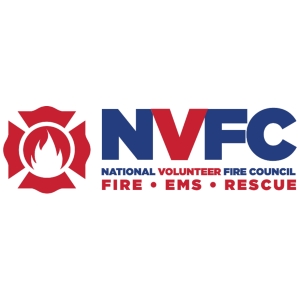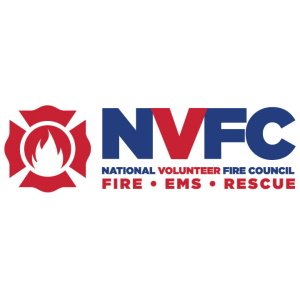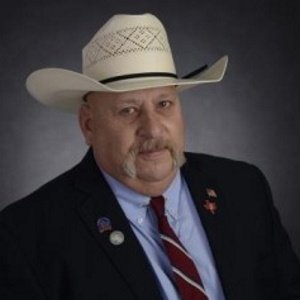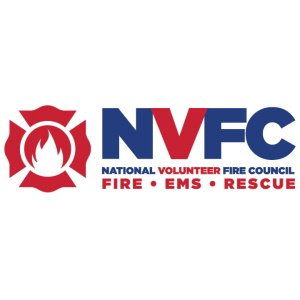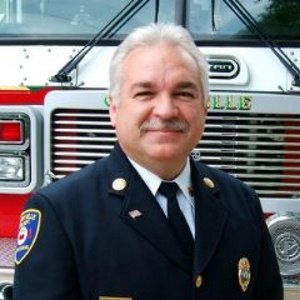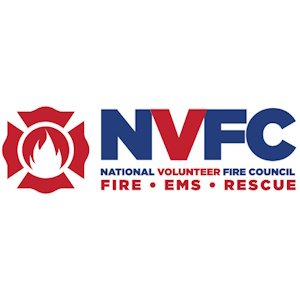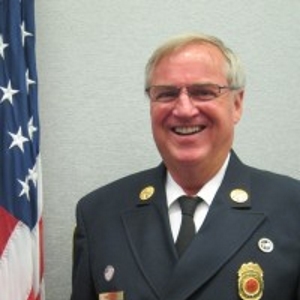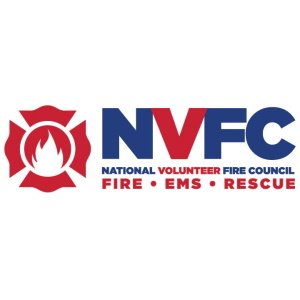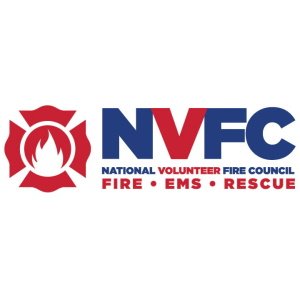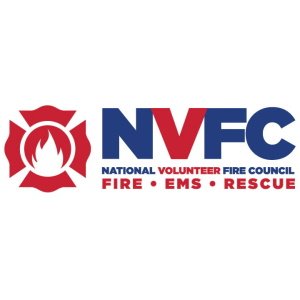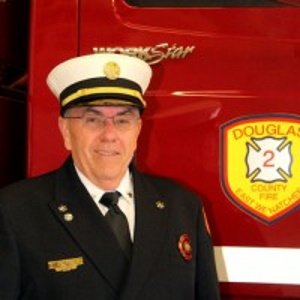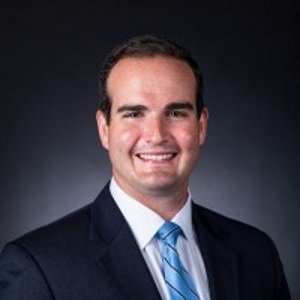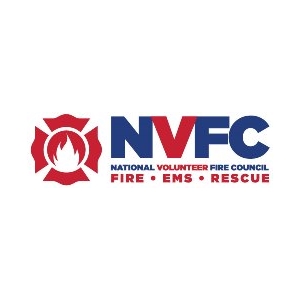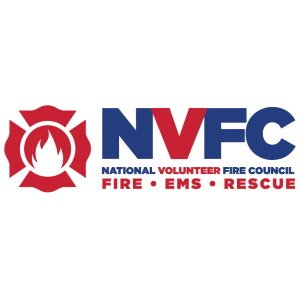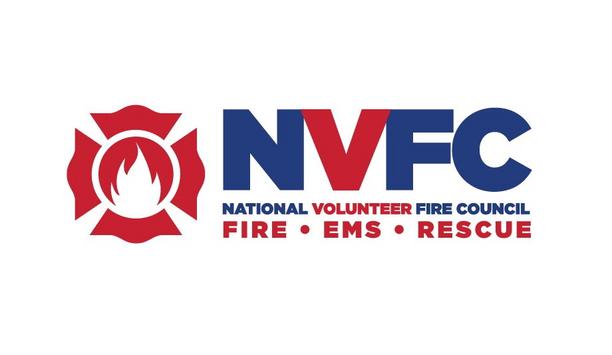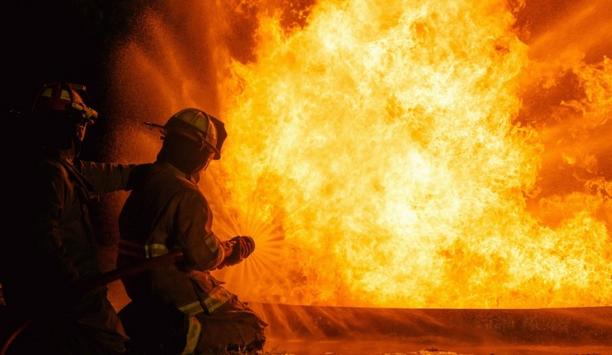National Volunteer Fire Council (NVFC) - Experts & Thought Leaders
Latest National Volunteer Fire Council (NVFC) news & announcements
Volunteer first responders balance demanding schedules, making it challenging to pursue personal goals like higher education. Fortunately, online learning offers greater flexibility, helping emergency services personnel advance their education while maintaining a healthy work-life balance. Two educational scholarships To support volunteer responders in reaching their academic goals, the National Volunteer Fire Council (NVFC) and Columbia Southern University (CSU) are once again partnering to offer two educational scholarships. Now in its 17th year, the program will award two NVFC members a scholarship covering up to 60 credit hours towards any one online CSU degree program of their choice. The scholarship will be applied directly to tuition and is valid for up to three years or until degree completion, whichever comes first. To be eligible for the scholarship, applicants must: Be a current member of the NVFC. Learn about member benefits and join for just $24 at the website. Be a volunteer responder. Complete the scholarship application. Submit a 500-word essay on the impact this scholarship will have on the emergency services role. Provide at least one letter of recommendation from a teacher or someone at the fire department they reported to directly. Have a high school diploma or equivalent (GED) and be able to provide a transcript. Be able to begin coursework within 90 days of the date of the award. Maintain a 2.0 undergraduate GPA or 3.0 graduate GPA. Remain in good standing with CSU and the NVFC throughout the degree program. Maintain continuous enrolment in the CSU degree program for the duration of the scholarship. Already meet these requirements to be considered if they are a current CSU student. Not be a previous CSU scholarship recipient. CSU’s wide range of degree programs Scholarship recipients can select from CSU’s wide range of degree programs, including fire science Scholarship recipients can select from CSU’s wide range of degree programs, including fire science, fire administration, emergency medical services, emergency management, occupational safety and health, organizational leadership, and more. Degree options include associate, bachelor’s, and master’s programs. CSU is accredited by the Southern Association of Colleges and Schools Commission on Colleges. NVFC Scholarship Committee The scholarship application period is open from May 15 through August 17. An NVFC Scholarship Committee will review applications and select the recipients. Winners will be announced in October 2025, and all applicants will be notified of the decision by email.
Having a healthy and engaged workforce creates a successful, high-performing fire or EMS department. To help departments better support their members, the National Volunteer Fire Council (NVFC) has released an updated, online version of the Psychologically Healthy Fire Departments: Implementation Toolkit. A Psychologically Healthy Fire Department focuses on the well-being of its members to increase satisfaction, enhance retention and recruitment, and improve overall performance and success. This new web site will make it easier for fire department leaders to navigate information and resources to promote and foster well-being among their members. Six key categories of toolkit The toolkit covers the six key categories of member involvement, health and safety, member growth and development, work-life-volunteer balance, member recognition, and effective communication. Each category is examined along with specific actions that can be taken, special issues to consider, case studies from successful departments, and additional resources.
Each year, MSA Safety and DuPont Personal Protection partner with the National Volunteer Fire Council (NVFC) to provide Globe turnout gear and MSA fire helmets to volunteer fire departments in need. In 2024, 13 volunteer fire departments across the U.S. and Canada each received four new sets of turnout jackets, turnout pants, and helmets to help increase the safety of their responders. MSA also provided the first 500 applicants with an NVFC membership. Compliant with safety standards The donations have made a notable impact in enabling units to better protect their responders Since the program began in 2012, a total of 767 sets of gear and 312 helmets have been donated to 173 departments, totaling more than 2 million dollars in life-saving gear. Receiving departments faced limited budgets and resources, which prevented them from securing the sufficient quantity of gear they needed and/or left them using gear that was out of date and not compliant with safety standards. The donations have made a significant impact in enabling departments to better protect their responders. Enhance the safety of ground firefighters “Volunteer firefighters are the backbone of their communities, answering the call whenever their neighbors have an emergency,” said NVFC Chair, Steve Hirsch. He adds, “And yet many departments lack the funding to be able to provide state-of-the-art, up-to-date personal protective equipment for their responders. We are proud to partner with MSA and DuPont each year to help meet this need and enhance the safety of our boots on the ground firefighters.” Improve safety for firefighters “DuPont is honored to continue supporting the Globe Gear Giveaway program, which plays a crucial role in providing essential safety equipment to volunteer firefighters across the United States and Canada. We strongly believe that those who protect their communities deserve the very best protection,” said Stephanie Vrakas, NA Marketing Manager, DuPont Personal Protection. “At MSA, our mission is helping to keep people safe at work, including firefighters who are helping to keep their communities safe,” said Ben Mauti, Director of Americas Segment Marketing at MSA Safety, adding “We’re proud to be supporting this program and helping to improve safety for firefighters at fire departments that are most in need, so these firefighters have the protective equipment they need when their community calls on them for help.” Recipients of the 2024 MSA The recipients of the 2024 MSA and DuPont’s Globe Gear Giveaway are as follows: Cornettsville (KY) Fire Department Hessmer (LA) Fire Department East Galesburg (IL) Volunteer Fire Department East Glacier Park (MT) Volunteer Fire Department Elmore Fire Department (Lake Elmore, VT) Gander Bay Fire Department (Wing’s Point, NL, Canada) Hasbrouck Heights (NJ) Fire Department Keating Rural Fire Protection District (Baker City, OR) Prater Fire and Rescue (Grundy, VA) Samburg-Reelfoot Volunteer Fire Department (Hornbeak, TN) Tanner Volunteer Fire Department (Athens, AL) Taylorstown (PA) Volunteer Fire Department Terre Du Lac Fire Department (Bonne Terre, MO). DuPont’s Globe Gear Giveaway To be eligible to apply for the giveaway, departments must be over 50 percent volunteer, serve a population of 25,000 or less, be located in the U.S. or Canada and legally organized under state/province law, demonstrate a significant need for new gear, and the person applying or the department chief must be a member of the NVFC. MSA provides NVFC memberships to the first 500 applicants to help departments meet the membership requirement. The application period for 2025 MSA and DuPont’s Globe Gear Giveaway will open in February 2025. A total of 52 sets of turnout gear and helmets will be awarded to increase firefighter safety. Stay tuned to the NVFC web site, Dispatch newsletter, and Facebook, X, LinkedIn, and Instagram pages, as well as the Globe Facebook page, for details.
Insights & Opinions from thought leaders at National Volunteer Fire Council (NVFC)
Two grant programs designed to address staffing, equipment, training, and health and safety needs of firefighters are scheduled to ‘sunset’ in 2024 unless Congress reauthorizes the grant programs, and funding for the programs will run out unless Congress endows them for another year. Legislation to extend the programs has already passed the U.S. Senate. The Staffing for Adequate Fire and Emergency Response (SAFER) grant program provides funding to hire additional personnel to maintain safe staffing levels in fire departments. The Assistance to Firefighters Grant (AFG) program pays for equipment, training and other fire department needs. Together, they ensure the readiness of 30,000 fire departments across the U.S. to respond to more than 30 million emergency calls annually. Introducing bipartisan legislation U.S. Senator Gary Peters, Chairman of the Homeland Security and Governmental Affairs Committee, introduced bipartisan legislation to reauthorize SAFER and AFG programs, and to provide funding for the United States Fire Administration (USFA). Other authors of the bipartisan legislation are Republican Senators Susan Collins of Maine and Lisa Murkowski of Alaska; and Democratic Senator Tom Carper of Delaware in addition to Democrat Peters. The bill was approved by the Senate Homeland Security Committee and then moved to the full Senate Current authorization of funding for all three programs expires in 2023. The bill was approved by the Senate Homeland Security Committee and then moved to the full Senate for consideration. The Senate approved the bill on April 20. Senate Majority Leader Chuck Schumer earlier pledged to pass the Fire Grants and Safety Act of 2023 in the Senate to save the programs. In addition to reauthorizing the programs for another year, the bill extends the sunset from 2024 to 2030. Federal grant programs The bill also extends through 2030 the underlying formula for the authorizations of appropriations for the grant programs; those amounts are calculated by adjusting the amount authorized for 2013 ($750 million) each year to account for inflation. In November 2022, Michigan Congressman Dan Kildee announced legislation in the House to renew the two federal grant programs critical to local departments. The Fire Grant and Safety Act would extend the grants until 2030. The Department of Homeland Security (DHS) Federal Emergency Management Agency (FEMA) is responsible for the implementation and administration of the grant programs through the Grant Programs Directorate. Modern pumper truck Outfitting one firefighter with protective gear and breathing apparatus can cost $12,000 “These federal grant programs have delivered millions of dollars to departments and municipalities to [provide] the equipment and staffing levels [needed] to respond to fires and countless other emergency calls as safely and efficiently as possible,” said Sam Fresina, President of the New York State Professional Firefighters Association. Fire departments often face budget shortfalls and high costs that prevent them from investing in modern equipment to combat emergencies and keep firefighters safe. For example, a modern pumper truck can cost more than $750,000. Outfitting one firefighter with protective gear and breathing apparatus can cost $12,000. Providing recruitment incentives “Volunteer and combination fire and EMS departments struggle to get the funding they need to keep the lights on, fuel the ambulance, and purchase turnout gear,” said National Volunteer Fire Council Chair Steve Hirsch. “The AFG and SAFER programs are critical to these departments because they allow them to purchase needed equipment and provide recruitment incentives to volunteers to serve their community.” Other organizations supporting reauthorization of the grant programs and extension of the ‘sunset’ include the International Association of Fire Chiefs (IAFC), the Congressional Fire Services Institute (CFSI), the National Fallen Firefighters Foundation, the International Society of Fire Service Instructors, the International Association of Fire Fighters (IAFF), and the National Fire Protection Association (NFPA).
Given the fire service’s mission to fight fires, it is sadly ironic that there are arsonists in our midst. Admittedly, it’s a small number when compared to the multitude of firefighters who work tirelessly to achieve their mission. However, firefighter arsonists can have a huge negative impact on the credibility of the fire service, the public perception of firefighters, and even on morale in the ranks. In reality, hundreds of arrests each year in the United States of firefighters are charged with arson, defined as the willful and malicious burning of property. Although reporting is scant, arsonist firefighters are typically white males between the ages of 17 and 25. But what would motivate a firefighter to start a fire? The simple answer: There is a range of motivations, and all firefighter arsonists do not fit neatly into a single profile. One motivation is a desire for the adrenaline rush that comes with active firefighting. Adrenaline Rush Some firefighter arsonists fit a pattern of starting with small fires and progressing to larger ones Firefighters who are bored by hours of inactivity might be lured by the excitement of a fire even if they have to create it. The excitement and competitiveness of a fire can be a tempting motivation during long, slow periods in a firehouse. Some firefighter arsonists fit a pattern of starting with small fires and progressing to larger ones. The progression might be from a trashcan fire to a dumpster fire to an automobile fire to an abandoned building fire and finally to an occupied building fire. Each step in the progression heightens the stakes and the resulting adrenaline rush. Hero Complex Another motivation is the “hero complex.” Drawn to the recognition for saving lives and property, a firefighter might be tempted to create a situation in which that recognition can occur. A “vanity fire” might be set by a firefighter so they can be the first to warn others, rescue someone, or otherwise display their firefighting skills to colleagues and the public. Other Motivations Other motivations might be vandalism, revenge, or monetary incentives. In the case of wildland firefighters, for example, a fire might be set to elicit more working hours (and extra pay). Peer pressure might also be a factor if other young firefighters are setting fires. Hearing stories of past heroism by older firefighters might motivate younger firefighters to resort to arson to become more active and involved in firefighting. Training exercise Training fires should comply with all the relevant NFPA standards, documentation, and paperwork There is a fine line – but it must be well delineated – between arson and setting a fire for a controlled burn or another training exercise. In the latter case, clear documentation and transparency must be deployed. Training fires should comply with all the relevant NFPA standards, documentation, and paperwork. Arson with good intentions, such as providing a training exercise, will not help to avoid prosecution. zero-tolerance policy If an intentional fire does not comply with the requirements of a controlled burn, it constitutes arson, and there should be zero tolerance. Starting any fire, no matter how small, is arson. Accomplices of arson can also be charged and prosecuted. Fire service leaders should enforce a written, communicated, and affirmed zero-tolerance policy that clearly states that fire setting is not acceptable. Education Fire departments should educate firefighters about the definition of arson and its consequences so that there is no margin for misunderstanding. Firefighter arson destroys the faith people have in firefighters and erodes the foundation of the fire service. After an arson incident, the firefighter’s former colleagues are left to deal with the aftermath while salvaging their reputations and that of the department. Retention and recruitment can suffer. preventive approach Some recruits may not be aware of the seriousness of arson, especially regarding a low-risk target Conducting background checks on firefighter recruits is one step departments can take, although evidence suggests that firefighters usually become arsonists after they join the fire service. Another preventive approach is to instruct firefighters about the seriousness and repercussions of setting fires and about the potential for boredom on the job. Some recruits may not be aware of the seriousness of arson, especially regarding a low-risk target such as a dumpster or vacant building. toolkit Fire chiefs and department leaders should always keep lines of communication open so that members feel safe to come forward with any information about arson, even anonymously. The National Volunteer Fire Council (NVFC) works with the U.S. Fire Administration (USFA) to promote an understanding of the historical and contemporary scope of the arson problem. They provide a “toolkit” designed to help departments implement measures to prevent firefighter arson and navigate an incident’s aftermath. The toolkit includes sample documents such as press materials, sample standard operating guidelines, checklists, etc.
Maintaining adequate staffing is a key challenge facing many volunteer fire departments. While not a new issue, increasing population and call volumes along with the expanded services many volunteer departments now provide have made recruiting and retaining volunteers a top priority in the fire service. The federal government supports volunteer recruitment and retention through the Staffing for Adequate Fire and Emergency Response (SAFER) grant program, administered by the Federal Emergency Management Agency (FEMA). SAFER has provided more than $300 million in grants to help fire departments recruit and retain volunteers from FY 2010-2017 and will distribute approximately $42 million in the FY 2018 grant cycle, expected to open in the near future. Annual Contribution Cap Give volunteer emergency responders increased access to mortgage and other housing assistance programs through the U.S. Department of Agriculture The National Volunteer Fire Council’s (NVFC) legislative agenda for 2019 is heavily focused on recruitment and retention. In addition to advocating for funding for SAFER, we will be asking Congress to: pass legislation exempting nominal benefits that volunteers receive as a reward for their service from federal income and withholding taxes clarify the tax status of length of service award program (LOSAP) to make plans easier to administer (the NVFC was successful last year in doubling the annual contribution cap on LOSAP from $3,000 to $6,000) make volunteer emergency responders eligible for the Public Service Loan Forgiveness (PSLF) program through the U.S. Department of Education, which forgives the student loan debt of public servants who have served for at least 10 years give volunteer emergency responders increased access to mortgage and other housing assistance programs through the U.S. Department of Agriculture Free Department Portal In addition, the NVFC recently received a SAFER grant to continue its work with the Make Me A Firefighter campaign. Launched in 2014, this is the first national volunteer recruitment campaign of its kind. Fire and emergency service agencies can use the free department portal to find resources and tools to help them with recruitment as well as post their volunteer opportunities in a national database. Department composition should reflect the community’s demographics, and yet many groups, such as millennials, women, and minorities The campaign also works to raise public awareness of the need for volunteers and connects potential recruits with their local fire department through the web site. With the new grant, additional focus will be given to retention of volunteers. Department composition should reflect the community’s demographics, and yet many groups, such as millennials, women, and minorities, are drastically underrepresented in the fire service. Diversify Their Ranks These target groups present significant areas of opportunity for fire department recruiters. As part of the Make Me A Firefighter campaign, the NVFC is working to help departments diversify their ranks and reach these key audiences. Volunteers make up 70% of the U.S. fire service, and most small, rural communities depend entirely on volunteers to respond to emergencies of all kinds. Recruiting and retaining volunteer firefighters, EMS providers, and support members is critical to ensure adequate protection of our residents. The NVFC will continue to provide advocacy and resources to help local departments in their efforts.
The New Future For Fire Agencies
DownloadThe Eight Key Trends in Fire Detection in 2023
DownloadA Digital Platform to Improve Fire Safety Compliance and Inspections
DownloadOvercoming the Challenges of Fire Safety in the Paper Industry
DownloadCarbon Monoxide: Creeping Killer Caught In The Act
Download